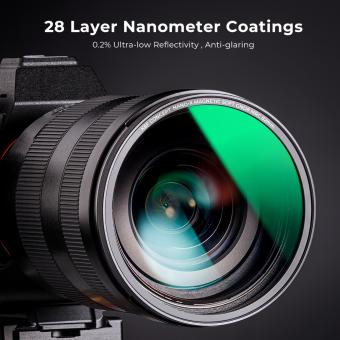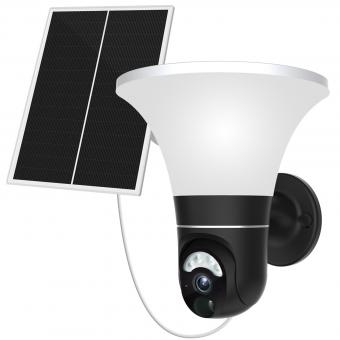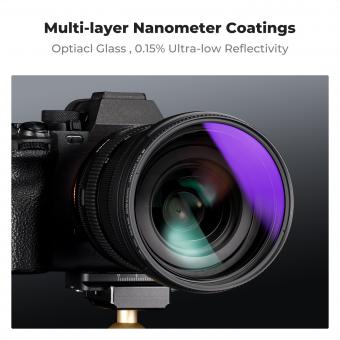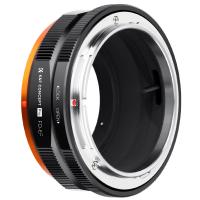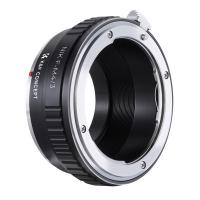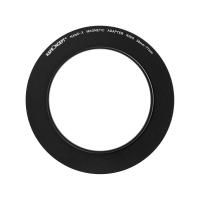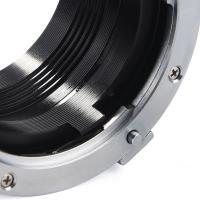What Does A Polariser Filter Do ?
A polarizer filter is an optical filter that selectively blocks certain polarized light waves while allowing others to pass through. It is commonly used in photography and cinematography to control and manipulate the polarization of light. By reducing or eliminating glare and reflections from non-metallic surfaces such as water or glass, a polarizer filter can enhance color saturation, improve contrast, and increase overall image quality. It can also darken the sky and make clouds more prominent in landscape photography. Additionally, polarizer filters are used in various scientific and industrial applications to analyze polarized light, reduce unwanted reflections, and enhance image clarity.
1、 Polarizer filter reduces glare and reflections from non-metallic surfaces.
A polarizer filter is an essential tool for photographers and videographers that helps to reduce glare and reflections from non-metallic surfaces. It achieves this by selectively blocking certain polarized light waves while allowing others to pass through. This results in a more balanced and vibrant image with improved color saturation and contrast.
When light reflects off a non-metallic surface such as water, glass, or foliage, it becomes polarized, meaning the light waves align in a specific direction. This polarized light can cause unwanted reflections and glare, which can significantly impact the quality of an image. A polarizer filter works by filtering out these polarized light waves, allowing only the desired light to pass through the lens.
By reducing glare and reflections, a polarizer filter can enhance the overall clarity and detail of a photograph or video. It can make skies appear bluer, water more transparent, and foliage more vibrant. Additionally, it can help to minimize haze and atmospheric pollution, resulting in a crisper and more defined image.
In addition to its traditional use in landscape and outdoor photography, polarizer filters are also commonly used in architectural photography to reduce reflections on glass surfaces. They can also be used in product photography to eliminate unwanted reflections on shiny objects.
It is important to note that polarizer filters work best when the photographer adjusts the filter's orientation to achieve the desired effect. By rotating the filter, the photographer can control the amount of polarized light that is blocked or allowed to pass through. This allows for greater flexibility and creativity in capturing the desired image.
In recent years, advancements in technology have led to the development of circular polarizer filters, which are more suitable for use with modern digital cameras. These filters are designed to work effectively with autofocus and metering systems, ensuring accurate exposure and focus.
Overall, a polarizer filter is a valuable tool for photographers and videographers, allowing them to capture stunning images with reduced glare and reflections. It is an essential accessory that can greatly enhance the quality and impact of their work.
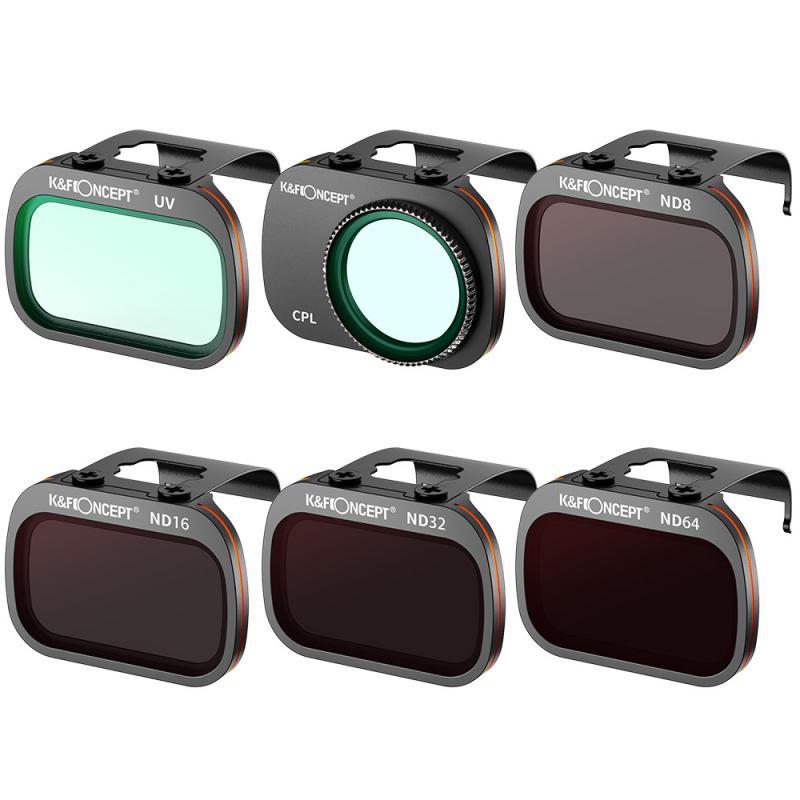
2、 It enhances color saturation and contrast in photographs.
A polarizer filter is an essential tool for photographers that helps enhance color saturation and contrast in photographs. It achieves this by reducing glare and reflections from non-metallic surfaces such as water, glass, and foliage. By selectively blocking certain light waves, a polarizer filter allows only light waves that are aligned in a specific direction to pass through the lens, resulting in more vibrant and saturated colors.
When photographing landscapes, a polarizer filter can make a significant difference in the final image. It deepens the blue of the sky, making it appear richer and more intense. It also reduces reflections on water surfaces, allowing the photographer to capture the underlying details and colors more effectively. Additionally, a polarizer filter can enhance the green tones of foliage, making them appear more vibrant and lifelike.
Moreover, a polarizer filter can also improve overall image contrast. By reducing unwanted reflections, it helps to bring out the details in both highlights and shadows, resulting in a more balanced and visually appealing photograph. This is particularly useful when shooting in bright sunlight or when dealing with high contrast scenes.
It is important to note that the effectiveness of a polarizer filter depends on the angle at which it is used. The maximum polarization effect is achieved when the camera is positioned at a 90-degree angle to the sun. As the angle deviates from this optimal position, the polarization effect decreases.
In recent years, with the rise of digital post-processing techniques, some argue that the role of polarizer filters has diminished. While it is true that certain effects can be replicated in post-processing, the use of a polarizer filter still offers distinct advantages. It allows photographers to capture the desired effect in-camera, reducing the need for extensive editing later. Additionally, a polarizer filter can help protect the lens from dust, scratches, and other potential damage.
In conclusion, a polarizer filter enhances color saturation and contrast in photographs by reducing glare and reflections. It is a valuable tool for photographers, particularly when capturing landscapes and scenes with non-metallic surfaces. While there may be alternative methods to achieve similar effects in post-processing, the use of a polarizer filter remains relevant and advantageous in modern photography.

3、 It blocks certain light waves to improve image clarity.
A polarizer filter is an essential tool used in photography and cinematography to enhance image quality by reducing glare and improving color saturation. It achieves this by selectively blocking certain light waves.
When light reflects off non-metallic surfaces such as water, glass, or foliage, it becomes polarized, meaning the light waves align in a specific direction. This polarization creates intense glare and reduces the overall clarity and contrast of the image. A polarizer filter works by blocking these polarized light waves, allowing only the desired light to pass through the lens.
By rotating the filter, photographers can adjust the amount of polarization they want to eliminate. This enables them to control the level of glare and reflection in the final image. For example, when photographing a landscape with a polarizer filter, the photographer can reduce the glare on the water's surface, making it more transparent and revealing the submerged details.
Moreover, a polarizer filter enhances color saturation by reducing the scattered light that causes washed-out colors. It achieves this by blocking the light waves that are not aligned with the desired polarization direction. As a result, the colors appear more vibrant and true to life.
In addition to its traditional use in photography, polarizer filters are also used in various other applications. For instance, they are employed in LCD screens to improve visibility by reducing glare. They are also used in scientific research to study the polarization of light and its interaction with different materials.
In conclusion, a polarizer filter is a valuable tool that blocks certain light waves to improve image clarity, reduce glare, and enhance color saturation. Its versatility and effectiveness make it an essential accessory for photographers and filmmakers, enabling them to capture stunning and visually appealing images.
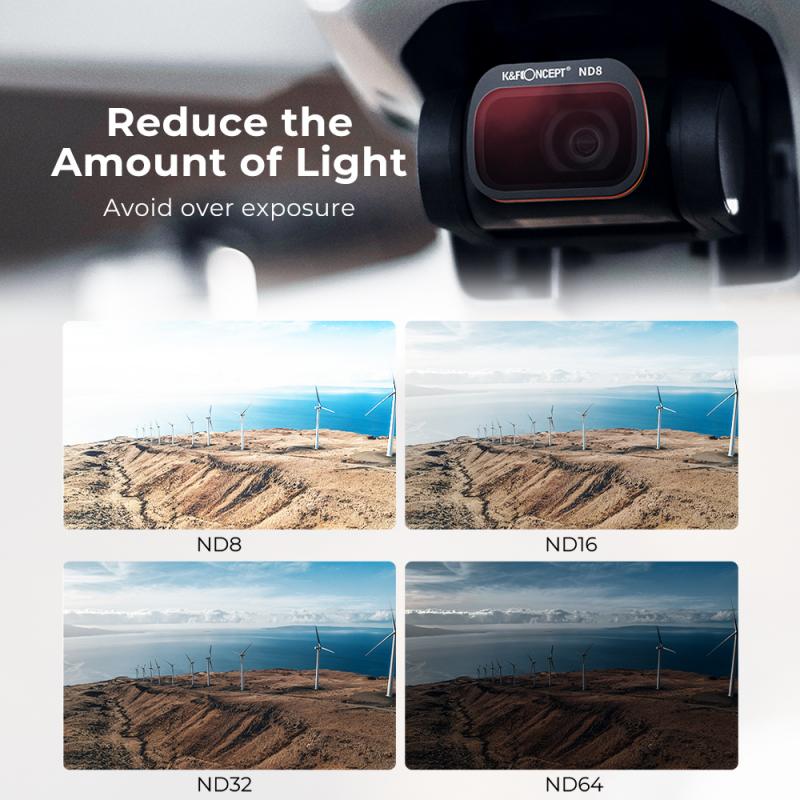
4、 It reduces atmospheric haze and improves overall image quality.
A polarizer filter is an essential tool for photographers and videographers that helps to enhance the quality of their images. It is a specialized optical filter that is primarily used to reduce atmospheric haze and improve overall image quality.
When light reflects off non-metallic surfaces such as water, glass, or foliage, it becomes polarized, meaning the light waves align in a specific direction. This polarization can cause unwanted glare and reflections, resulting in reduced color saturation and contrast in photographs. A polarizer filter works by selectively blocking certain polarized light waves, allowing only the desired light to pass through the lens.
By reducing glare and reflections, a polarizer filter helps to reveal the true colors and details of a scene. It enhances the saturation of colors, making them appear more vibrant and rich. This is particularly useful when photographing landscapes, as it can make the sky appear bluer, the clouds more defined, and the foliage greener.
Moreover, a polarizer filter also helps to improve the overall image quality by reducing atmospheric haze. When shooting in outdoor environments, especially on sunny days, the air can be filled with tiny particles such as dust, pollen, or water droplets. These particles scatter light, creating a hazy effect in photographs. By blocking the scattered light, a polarizer filter allows for clearer and sharper images with better contrast.
In addition to these traditional benefits, the latest polarizer filters also come with advanced features. Some filters are now equipped with multi-coatings that minimize reflections and lens flare, resulting in even better image quality. Additionally, some filters are adjustable, allowing photographers to control the amount of polarization according to their specific needs.
In conclusion, a polarizer filter is a valuable tool for photographers and videographers. It reduces atmospheric haze, improves overall image quality, enhances color saturation, and reduces unwanted glare and reflections. With the latest advancements in technology, polarizer filters continue to play a crucial role in capturing stunning and high-quality images.









